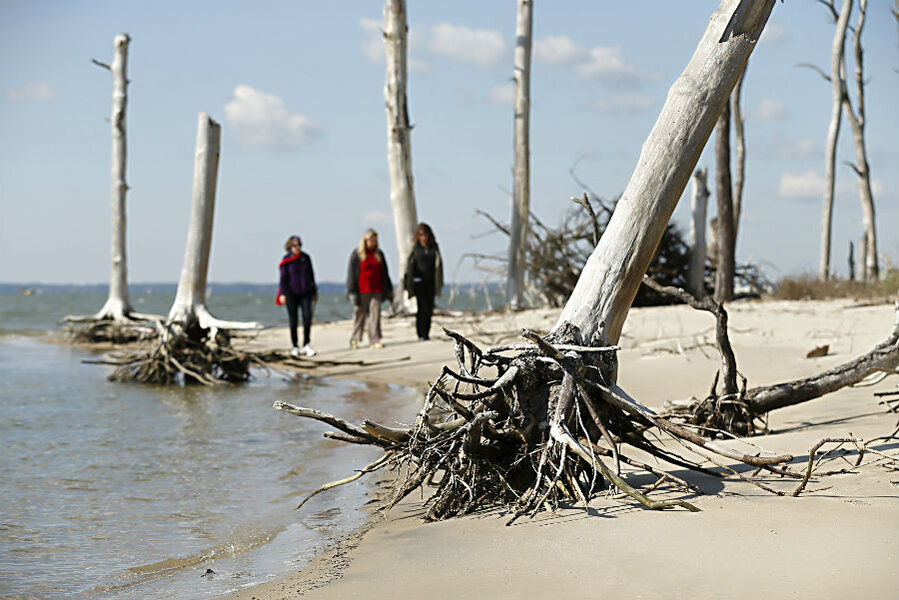Sea level rise: Why 13.1 million Americans might need to move
Loading...
Up to 13.1 million people could be at risk from sea level rise in coastal communities in the United States by the end of this century, according to new research.
The study, published Monday in Nature Climate Change, coupled projections of population growth with location-specific environmental data to produce small-scale assessments of how individual communities could be affected.
While the estimates emerging from this survey depend upon both sea level rises and population trends, if accurate, they could foretell a relocation effort equal to the 20th century's "Great Migration" by southern African-Americans.
“People have been doing impact assessments related to sea level rise for some time now, but using current population information, which has tended to go obsolete very quickly, because populations are dynamic by their very nature,” says lead author Mathew Hauer of the University of Georgia, in a telephone interview with The Christian Science Monitor.
“We wanted to create a model so we could make assessments using current and projected population figures.”
The tool they created employed population records for the 70-year period spanning 1940-2010, attaining a resolution down to areas about the size of a city block, and then used that data to calculate projected population growth on the same geographic scale.
The second aspect of the model considered elevation and associated flood risk for each coastal sector, using datasets from the National Oceanic and Atmospheric Administration (NOAA) for 22 coastal states and the District of Columbia.
The statistics from NOAA provide information based on varying sea level rises, ranging from 0 to 1.8 meters by the year 2100.
Of course, this all becomes irrelevant if sea levels remain as they are, but according to NOAA, such a scenario seems increasingly unlikely.
“Records and research show that sea level has been steadily rising at a rate of 0.04 to 0.1 inches per year since 1900. Since 1992, new methods of satellite altimetry (the measurement of elevation or altitude) indicate a rate of rise of 0.12 inches per year. This is a significantly larger rate than the sea-level rise averaged over the last several thousand years.”
With that in mind, Hauer and his colleagues produced estimates for the numbers of people likely to be impacted in US coastal communities, based on various degrees of sea level rise.
The upper end of those figures, based on NOAA’s data for a sea level rise of 1.8 meters, puts 13.1 million people at risk; a jump of 0.9 meters in sea levels will instead affect 4.2 million.
“Within the study, we provided results for all coastal counties,” Hauer tells the Monitor, “and as climate change mitigation in the US currently seems to be a bottom-up approach, our hope is that this data can be used by those communities to help with planning.”
The southeastern states account for nearly 70 percent of the total at-risk population, with Florida alone bearing the burden for nearly half.
Yet the authors' aspirations go further than just assisting with adaptation to sea level rise: they foresee the tools used in this study being expanded to look at other hazards, as well as modelling future economic impacts.
“There are a lot of other hazards you could couple this population projection approach with,” says Hauer, “such as storm surges associated with tropical cyclones.”






